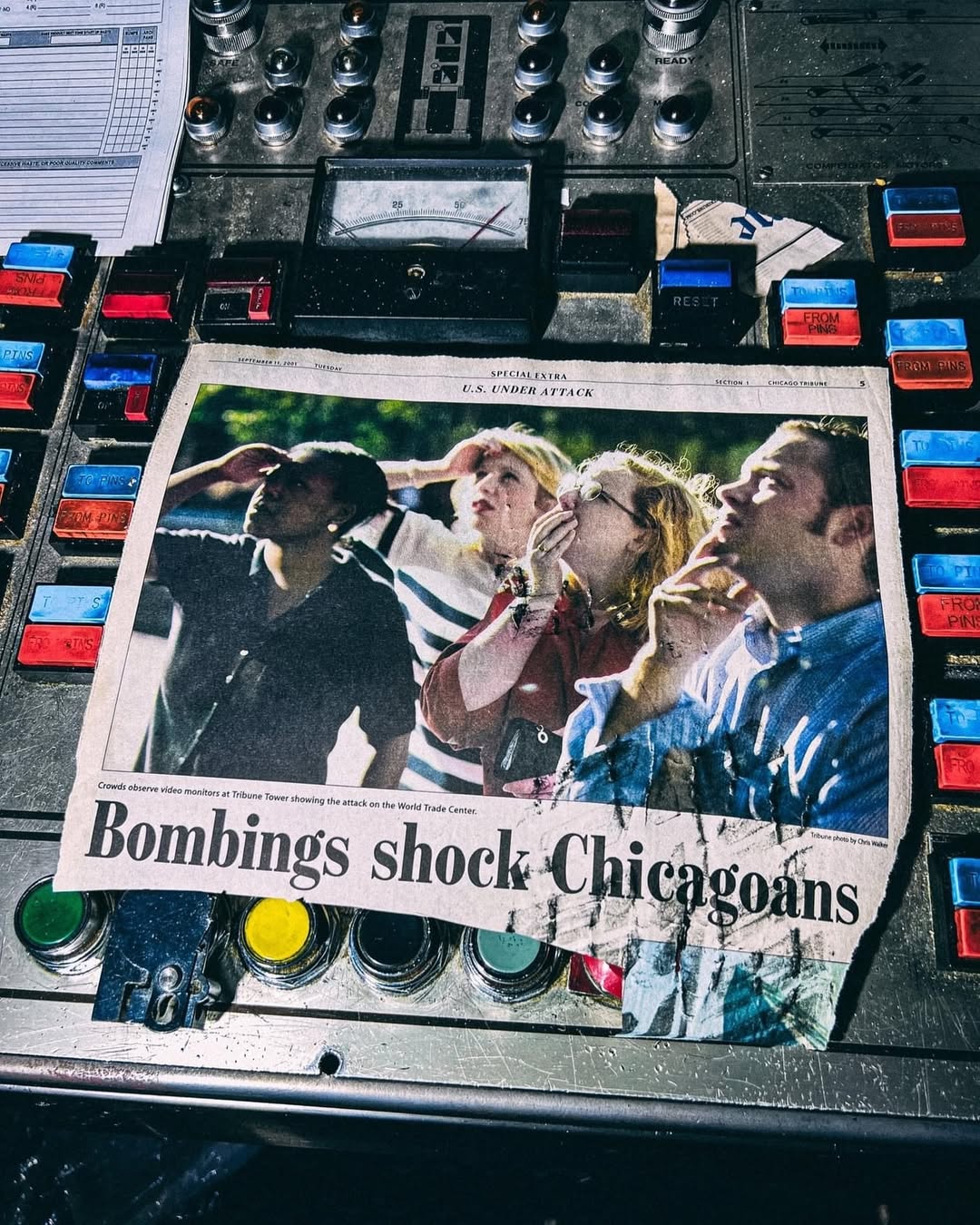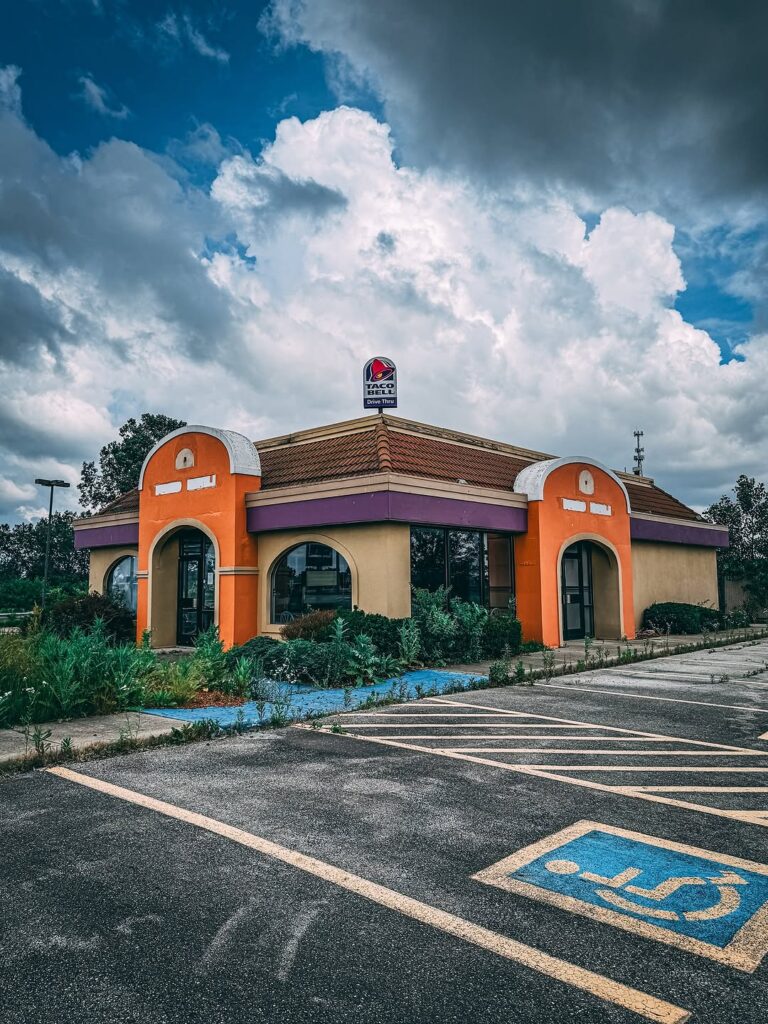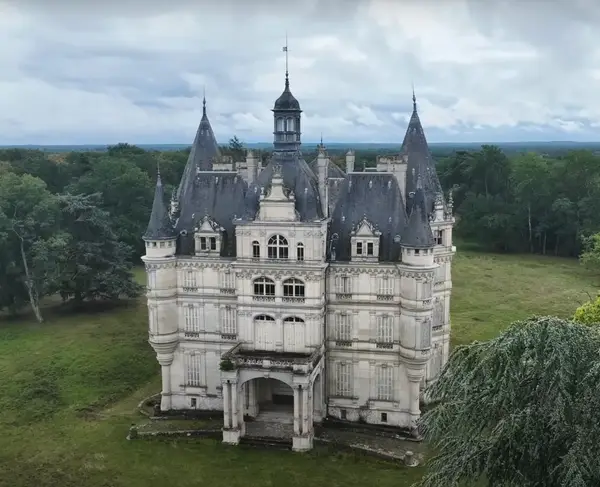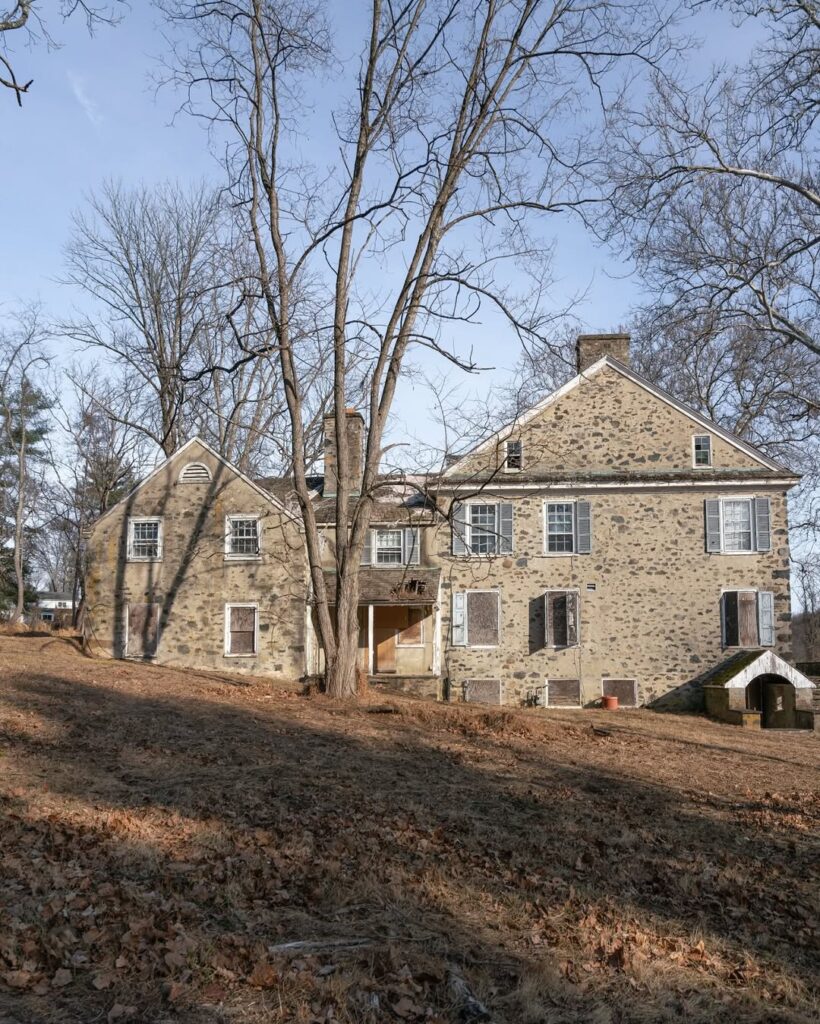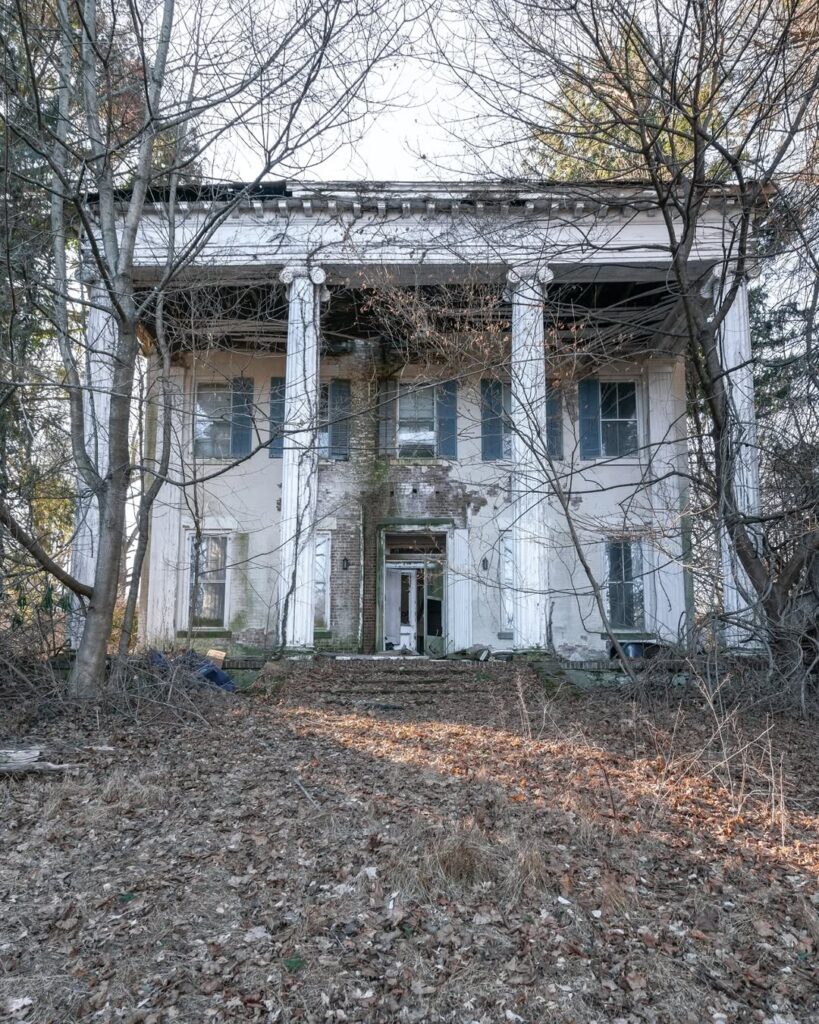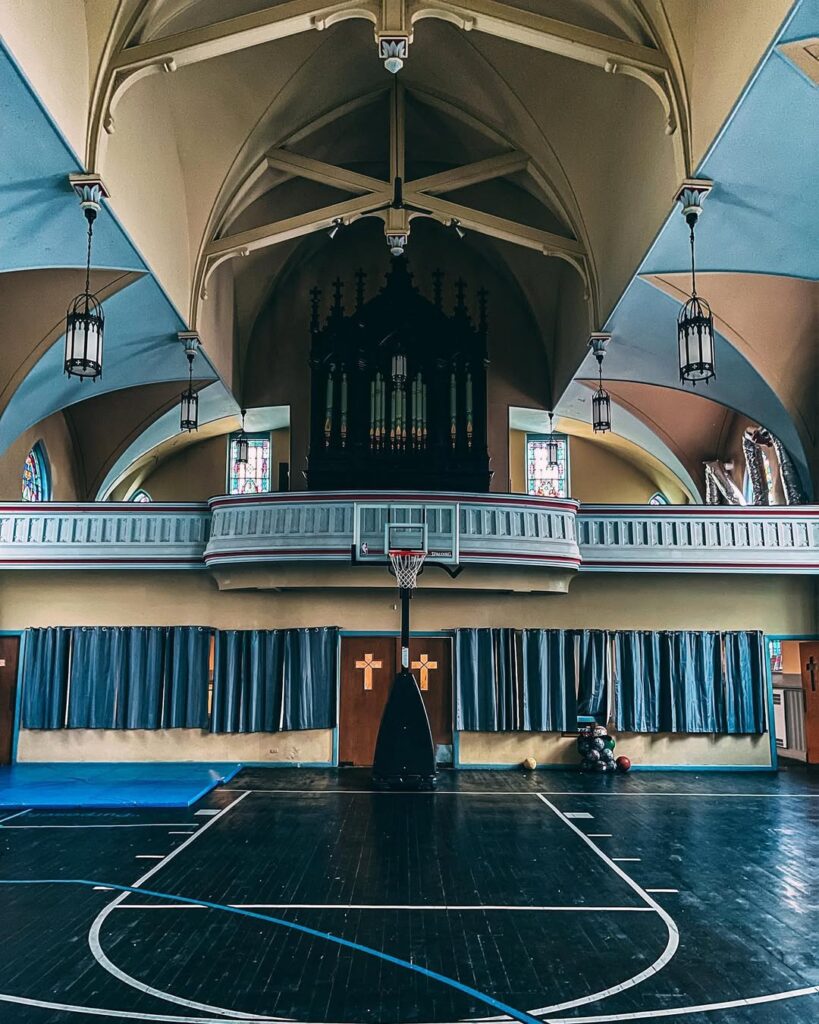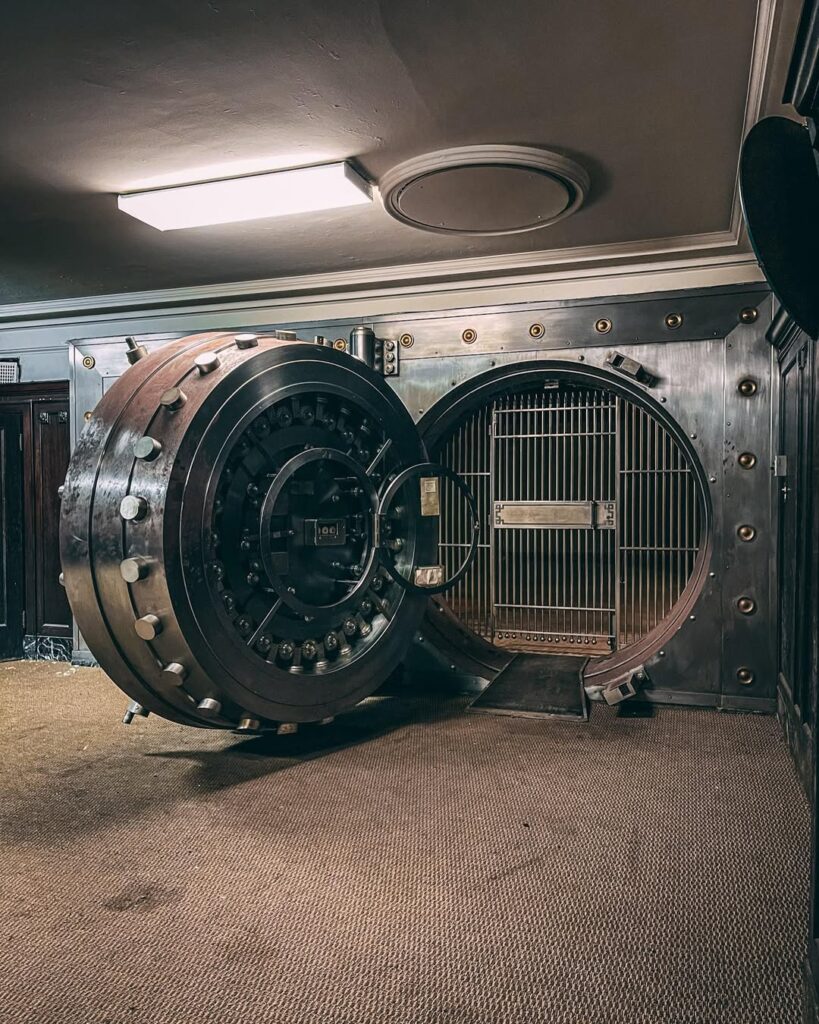The iconic Chicago Tribune Freedom Center, which served as the newspaper’s printing powerhouse for over four decades, is currently undergoing demolition to make way for a new chapter in Chicago’s entertainment landscape. This massive industrial facility, located at 777 W. Chicago Avenue in the River North district, closed its doors in May 2024 after printing its final edition, marking the end of an extraordinary period in American journalism history.
The demolition of this abandoned newspaper printing facility represents more than just the removal of a building—it symbolizes the transformation of Chicago’s media landscape and the evolution of urban development in one of America’s most dynamic cities.
The Rise and Legacy of the Freedom Center
Construction and Early Years
The Chicago Tribune announced plans for the $150 million printing plant on June 20, 1979, designed to replace their former printing facility at Tribune Tower. The Chicago Tribune printing plant was strategically positioned in the River North district, capitalizing on proximity to the Chicago River for transportation and logistics advantages.
The Freedom Center represented cutting-edge printing technology of its era, featuring state-of-the-art presses capable of producing hundreds of thousands of newspapers daily. The facility wasn’t just a printing plant—it served as a comprehensive publishing center that handled the Chicago Tribune and other major publications, including periods when it printed the Chicago Sun-Times.
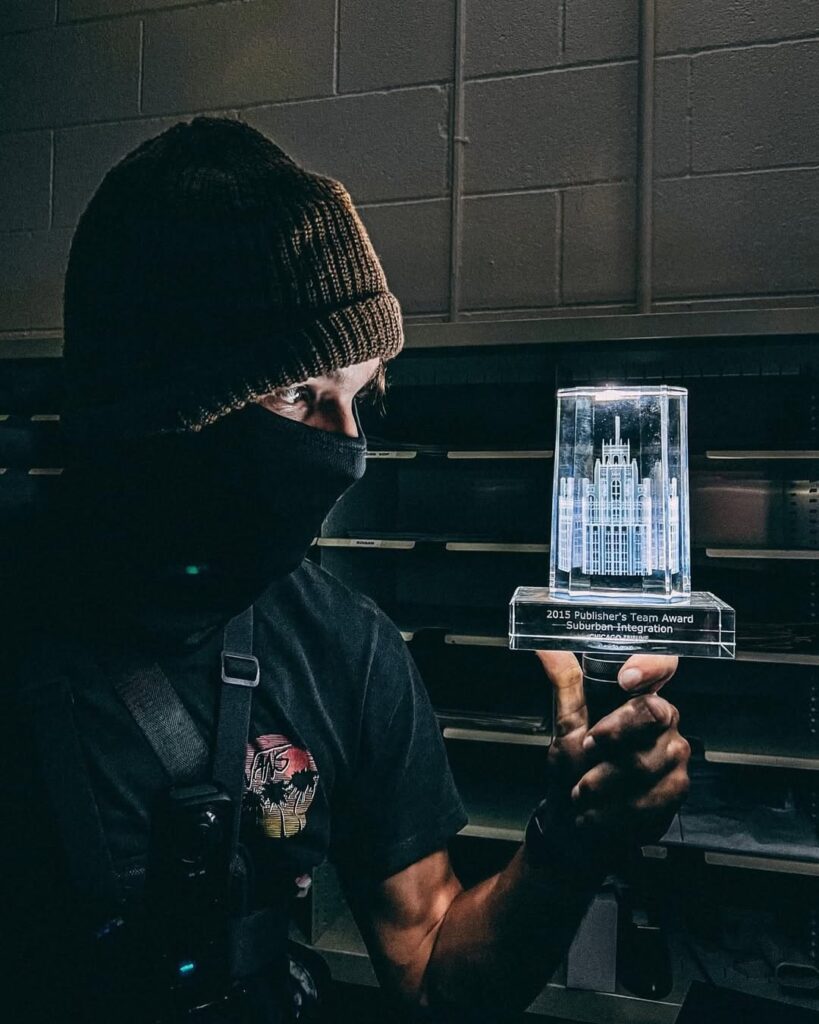
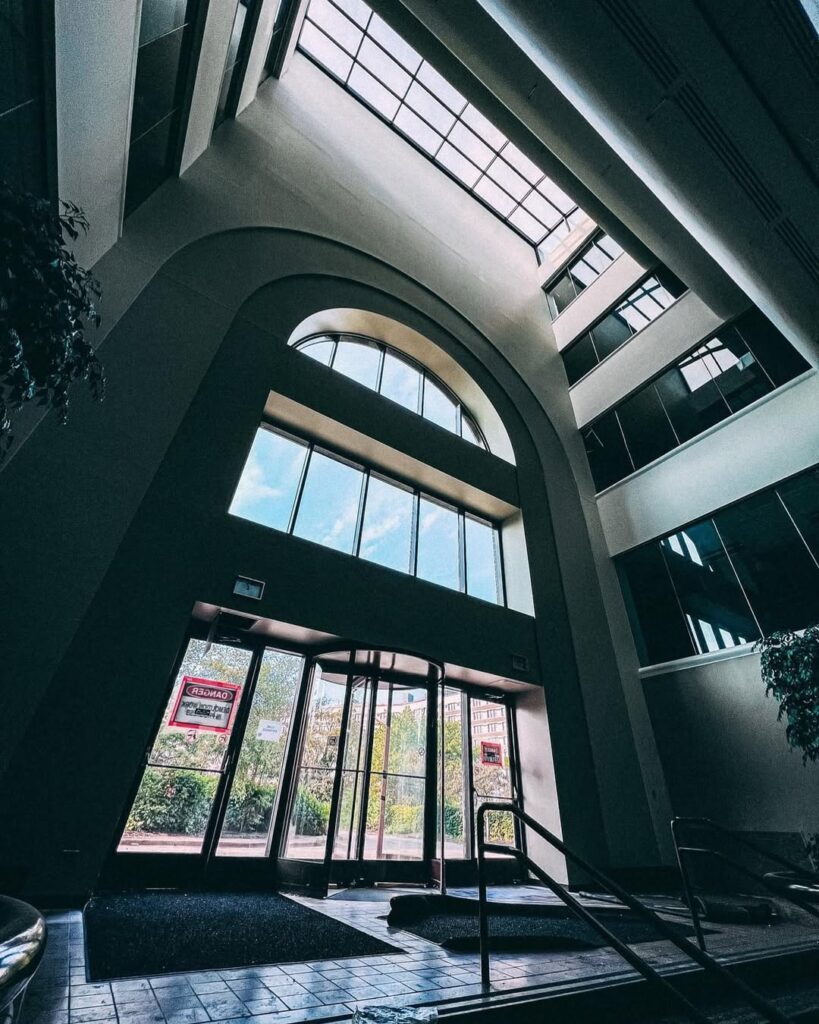
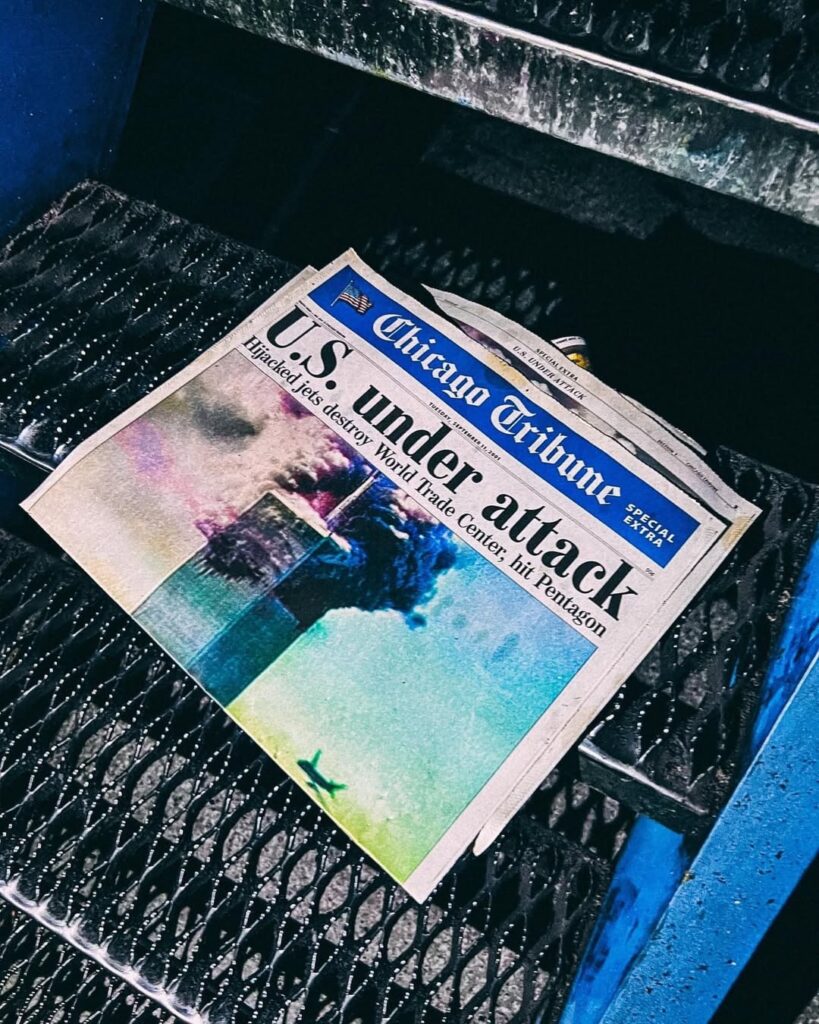

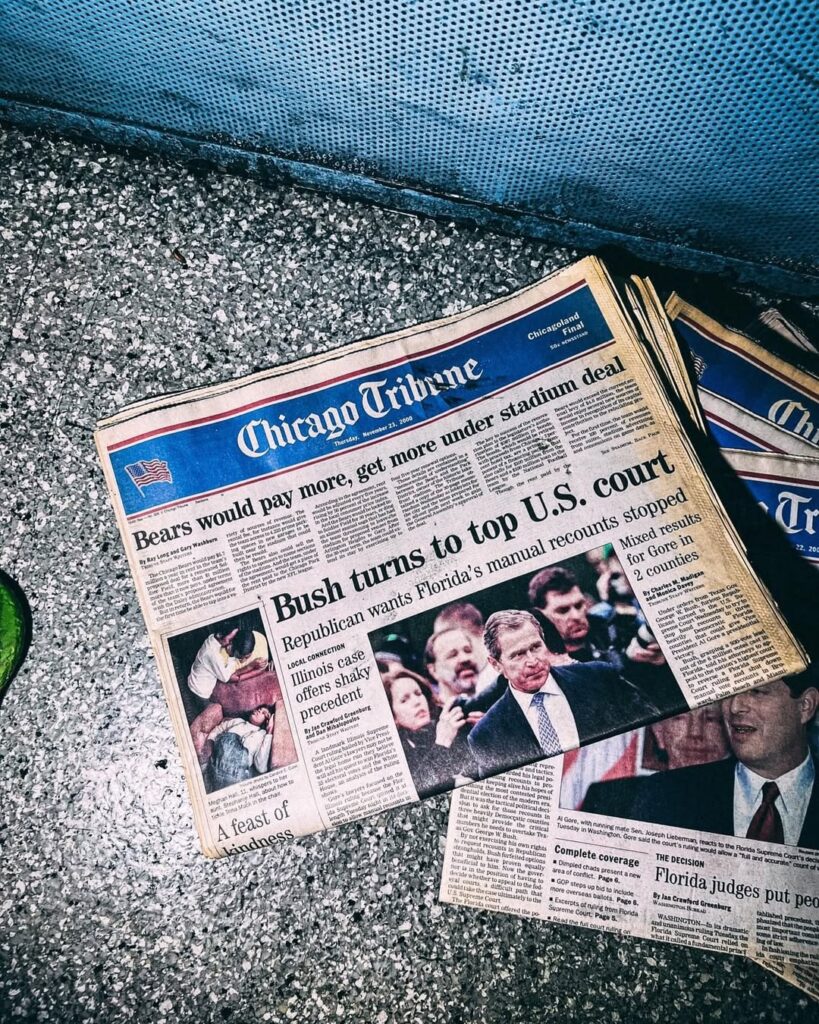

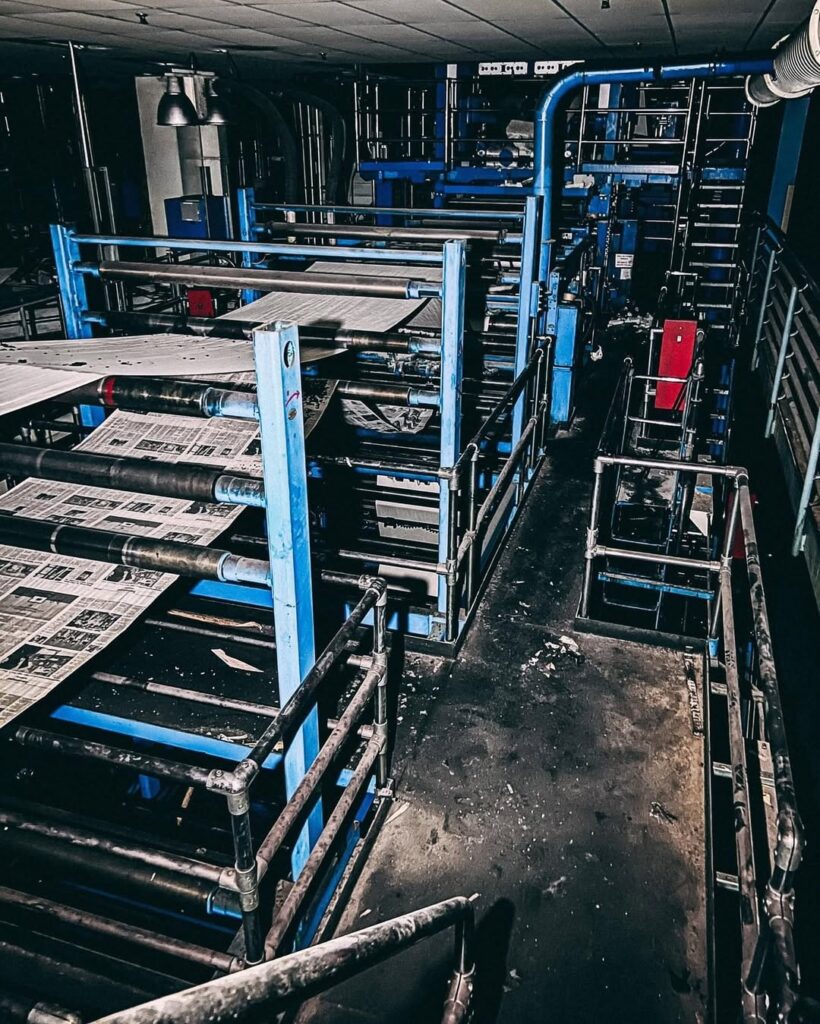

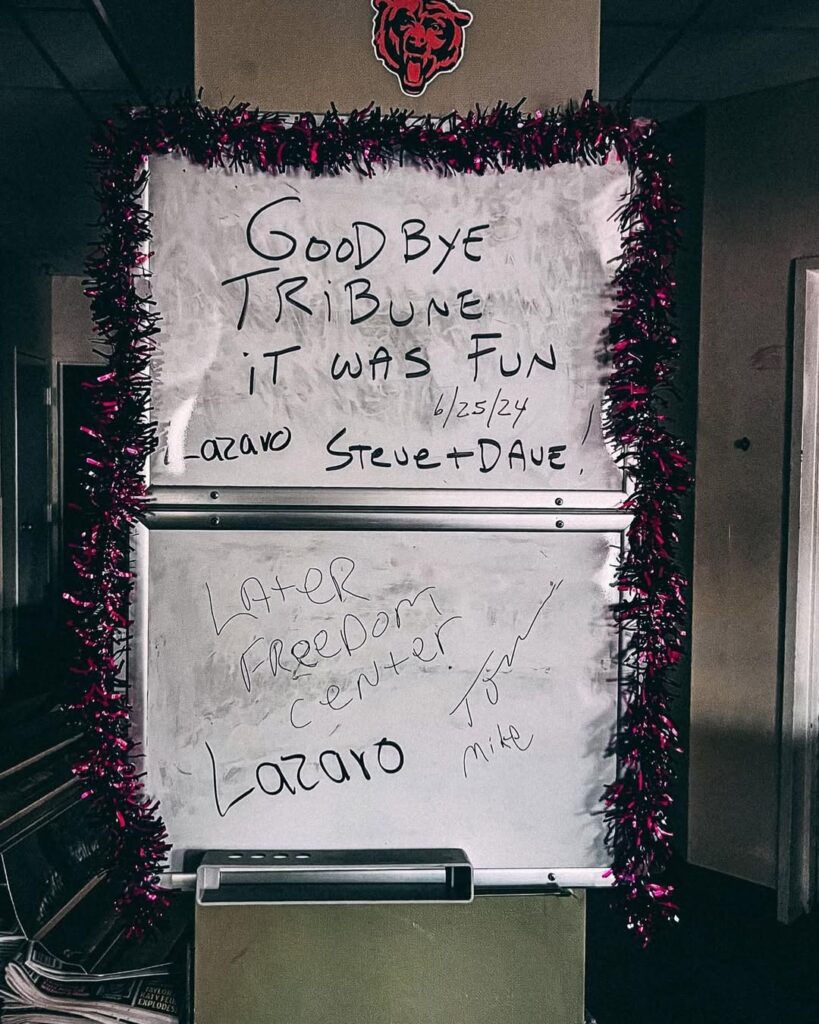
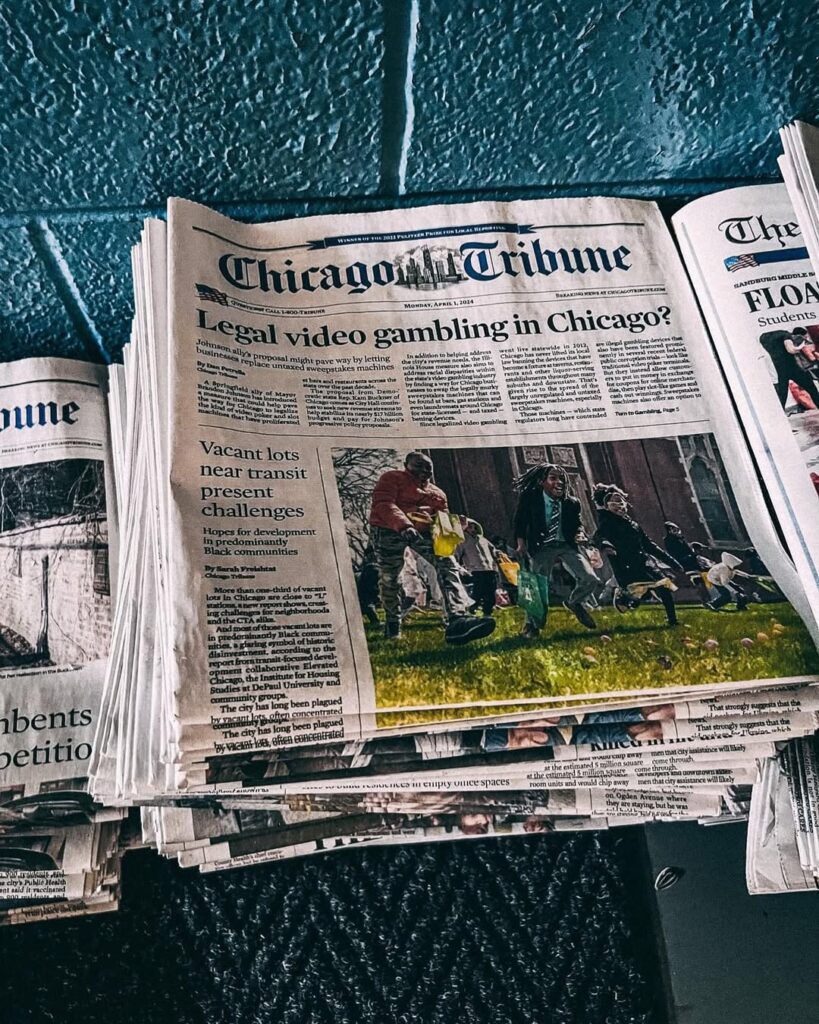
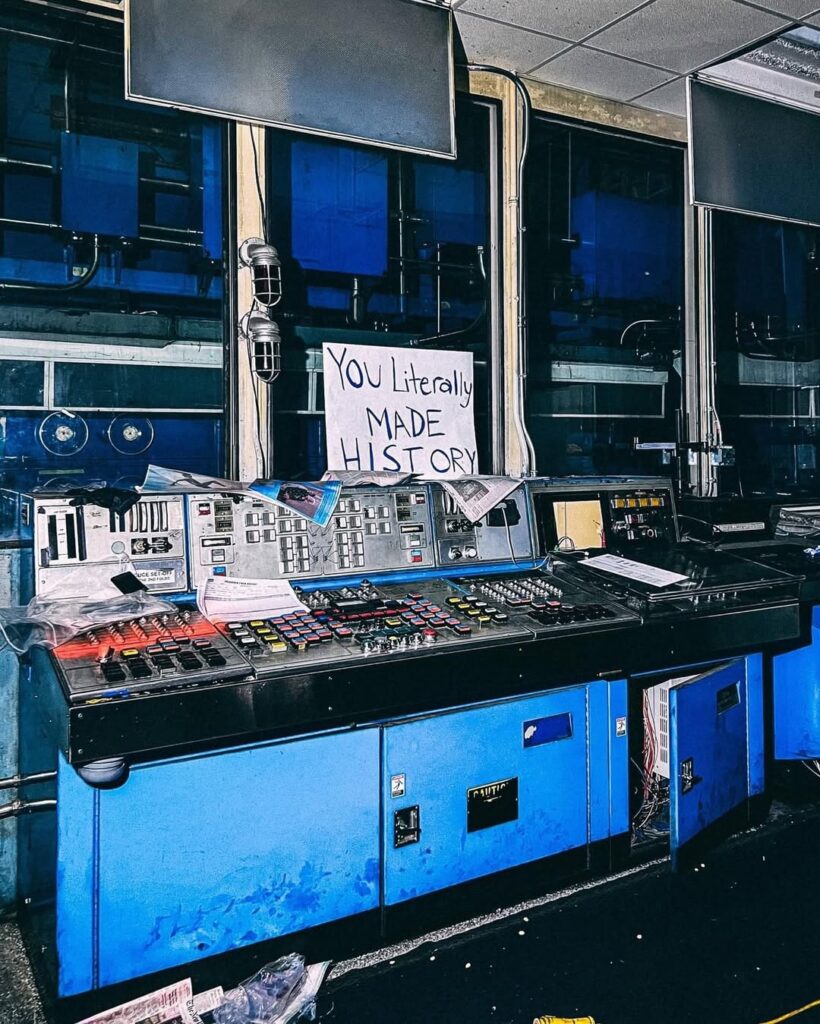
Architectural Significance and Industrial Design
The industrial architecture Chicago scene recognized the Freedom Center as a prime example of late 20th-century printing facility design. The building’s massive scale, designed to accommodate enormous printing presses and paper storage systems, created a distinctive silhouette along the Chicago River. The facility’s utilitarian design prioritized functionality while maintaining the industrial aesthetic that characterized Chicago’s manufacturing heritage.
The structure featured specialized loading docks, climate-controlled environments for paper storage, and sophisticated ventilation systems necessary for large-scale printing operations. These abandoned industrial buildings often showcase the engineering innovations required for specialized manufacturing processes.
The Final Years and Closure
Declining Print Industry and Economic Pressures
The newspaper industry decline that affected publications nationwide ultimately reached the Chicago Tribune’s operations. Digital media transformation, changing reading habits, and economic pressures from online advertising markets created unsustainable conditions for maintaining large-scale printing facilities in expensive urban locations.
By the 2020s, the economics of operating the Freedom Center became increasingly challenging. The facility’s massive scale, designed for peak newspaper circulation periods, became a burden as print runs decreased and operational costs remained high. Print media history scholars note that the Chicago Tribune’s situation reflected broader industry trends affecting major metropolitan newspapers across the United States.
The Final Press Run
On Saturday in May 2024, the Freedom Center printed its final edition of the Chicago Tribune before facing demolition. This historic moment marked the first time in the newspaper’s 177-year history that the Chicago Tribune would not be printed within the city limits. The Monday edition following the closure bore a “made-in-Schaumburg imprimatur” instead of its traditional Chicago printing designation.
The Chicago newspaper history community recognized this transition as a watershed moment, representing the end of an era when major metropolitan newspapers maintained substantial physical infrastructure within city centers.
The Demolition Process and Current Status
Bally’s Casino Development Project
Bally’s Corporation commenced demolition of the former Chicago Tribune printing plant in August 2024 as part of their ambitious casino development project. The Chicago casino construction represents a significant shift in the site’s purpose, from information production to entertainment and gaming.
The demolition process involves careful building demolition Chicago procedures due to the facility’s complex infrastructure and environmental considerations. The printing plant contained specialized equipment, chemical systems, and industrial materials requiring professional handling during the teardown process.
Environmental and Safety Considerations
Industrial demolition of newspaper printing facilities presents unique challenges due to the presence of printing inks, solvents, and other chemicals used in the publication process. Environmental remediation specialists must address potential soil contamination and ensure proper disposal of industrial materials accumulated over decades of operation.
The Chicago River development location adds additional complexity, as demolition activities must comply with waterway protection regulations and consider potential impacts on the surrounding ecosystem. Professional demolition crews implement dust control, noise management, and debris removal protocols to minimize disruption to the dense urban environment.
Demolition Timeline and Progress
Demolition of the former Chicago Tribune Freedom Center has begun in earnest along the Chicago River in West Town, with crews systematically dismantling the massive structure. The Chicago construction projects timeline for complete demolition spans several months, requiring specialized equipment capable of handling the building’s substantial concrete and steel construction.
Photography documentation of the demolition process has attracted significant interest from urban exploration Chicago enthusiasts and architectural preservationists seeking to record the facility’s final days.
Economic and Cultural Impact
Employment and Economic Effects
The closure of the Freedom Center affected hundreds of employees, from press operators and maintenance staff to administrative personnel. The Chicago manufacturing jobs loss represents broader trends affecting industrial employment in urban centers across the Midwest.
Many longtime employees had spent entire careers at the facility, developing specialized skills in large-scale printing operations. The newspaper printing jobs market has contracted significantly, leaving limited opportunities for workers with expertise in traditional newspaper production methods.
Community and Neighborhood Transformation
The River North development area has experienced significant transformation over recent years, with former industrial sites becoming residential, commercial, and entertainment destinations. The Freedom Center’s demolition continues this trend, replacing industrial infrastructure with consumer-oriented facilities.
Local Chicago urban planning officials view the site’s redevelopment as an opportunity to enhance public access to the Chicago River while creating new economic activity through the casino development. However, some community members express concern about losing the area’s industrial heritage and character.
Historical Significance and Preservation Efforts
Documenting Industrial Heritage
Chicago industrial history organizations have worked to document the Freedom Center’s significance before its complete demolition. The facility represented the pinnacle of newspaper printing technology and served as a crucial component of Chicago’s media landscape for over four decades.
Preservation advocates emphasize the importance of maintaining records of the facility’s operations, architectural features, and role in Chicago’s journalism history. Historic preservation Chicago efforts include photographic documentation, oral history projects with former employees, and architectural surveys of significant building elements.
Media History and Cultural Memory
The Freedom Center’s role in Chicago media history extends beyond its function as a printing facility. The building served as a symbol of the Chicago Tribune’s commitment to the city and represented the newspaper’s investment in local infrastructure and employment.
Journalism history scholars note that the facility’s closure reflects broader changes in how news organizations operate and distribute content. The shift from local printing to regional or outsourced production represents a fundamental change in the newspaper industry’s relationship with specific geographic communities.
Future Development and Casino Construction
Bally’s Chicago Casino Project
The Bally’s Chicago casino development represents a massive investment in the site’s future, with plans for a comprehensive entertainment complex replacing the printing facility. The permanent casino will be four times as big as the temporary casino currently operating at the Medinah Temple.
The casino project includes gaming floors, restaurants, entertainment venues, and supporting infrastructure designed to attract visitors from throughout the Chicago metropolitan area and beyond. Chicago entertainment development officials view the project as a significant addition to the city’s tourism and hospitality sector.
Urban Development Implications
The transformation from industrial printing facility to entertainment complex reflects broader Chicago waterfront development trends. The Chicago River corridor has become increasingly valuable for mixed-use developments that combine commercial, residential, and recreational components.
Chicago real estate development patterns show growing interest in repurposing former industrial sites for contemporary uses that better align with current economic conditions and community needs.
Challenges and Controversies
Community Concerns and Opposition
The casino development has faced opposition from some community groups concerned about gambling expansion Chicago and its potential social impacts. Critics argue that the loss of the printing facility represents a concerning trend away from productive industrial activity toward service-sector employment.
Chicago community development advocates have raised questions about the long-term economic benefits of casino operations compared to the stable employment previously provided by the printing facility.
Regulatory and Planning Challenges
The Chicago zoning process for the casino development required extensive review and community input. The transition from industrial to entertainment use necessitated significant regulatory approvals and infrastructure planning to accommodate the dramatically different traffic patterns and utility requirements.
Chicago building permits for the casino project involve complex coordination between multiple city departments and state gaming regulators, creating a lengthy approval process that extends the overall development timeline.
Lessons from the Freedom Center’s Transformation
Industrial Evolution and Urban Adaptation
The Freedom Center’s demolition exemplifies how cities must adapt to changing economic conditions and technological innovations. Chicago industrial transformation continues as the city evolves from its manufacturing heritage toward service and technology-oriented industries.
Urban renewal Chicago projects increasingly focus on repurposing former industrial sites for contemporary uses that provide employment and economic activity aligned with current market conditions.
Preservation vs. Development Balance
The challenge of balancing historic preservation with economic development needs reflects ongoing tensions in urban planning. While the Freedom Center lacked formal historic designation, its significance to Chicago’s media and industrial history raises questions about how communities should evaluate and protect important cultural assets.
Chicago architecture preservation advocates emphasize the importance of documenting and remembering significant buildings even when preservation isn’t economically feasible.
Conclusion: The End of an Era and New Beginnings
The ongoing demolition of the Chicago Tribune Freedom Center marks the definitive end of an era in Chicago journalism and industrial history. This massive facility, which once hummed with the energy of daily newspaper production, now gives way to a new form of entertainment and economic activity that reflects contemporary urban development priorities.
The transformation from abandoned newspaper facility to casino complex symbolizes broader changes affecting American cities, media industries, and community development patterns. While the loss of this significant industrial facility represents the end of an important chapter in Chicago’s history, the site’s redevelopment demonstrates the city’s ongoing ability to adapt and reinvent itself.
As demolition crews continue their work along the Chicago River, the Freedom Center’s legacy lives on in the thousands of newspapers it produced, the careers it supported, and the role it played in keeping Chicago informed for over four decades. The site’s future as an entertainment destination will create new memories and economic opportunities, ensuring that this prime riverfront location continues contributing to Chicago’s dynamic urban landscape.
The Chicago Tribune demolition serves as a reminder that cities are constantly evolving, with each generation building upon the foundations laid by previous eras while adapting to contemporary needs and opportunities. The Freedom Center’s story—from cutting-edge printing facility to abandoned industrial site to future casino complex—captures the ongoing narrative of urban transformation that defines Chicago’s relationship with its industrial heritage and modern aspirations.
![]()
Abandonedplace.com is your premier online destination for discovering and share the Top 50 abandoned places in the world. Our platform is dedicated to discovering the mystery, history and beauty of forgotten places through the Lenses of Urban Exploration

